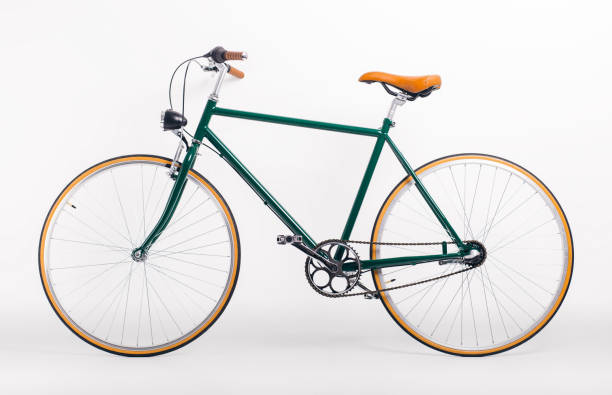Bikepacking vs. Bike Touring: Key Differences and How to Choose the Right Adventure
This post contains affiliate links. This means I will make a commission at no extra cost to you should you click through and make a purchase. Read the full disclosure here.
Cycling adventures are an incredible way to explore the world on two wheels, offering a unique perspective on landscapes, cultures, and the journey itself. Among the most popular forms of long-distance cycling are bikepacking and bike touring. While they share similarities, these two styles cater to different types of riders and adventures. In this article, we’ll break down the key differences between bikepacking and bike touring, helping you choose the right approach for your next cycling journey.
What is Bikepacking?

Definition:
Bikepacking is a form of adventure cycling that combines elements of backpacking and mountain biking. It involves traveling light and venturing off the beaten path, often through remote and rugged terrain. The focus is on minimalism, self-sufficiency, and exploration.
Key Characteristics:
- Terrain: Typically involves unpaved roads, singletrack trails, and wilderness paths.
- Bike Setup: Lightweight mountain bikes or gravel bikes equipped with bikepacking-specific bags that attach to the frame, handlebars, and seat post.
- Camping: Emphasis on backcountry camping, often in remote areas with limited access to amenities.
- Routes: Usually less structured, with a focus on exploring off-road or less traveled paths.
- Speed: Generally slower due to challenging terrain and the need for self-sufficiency.
Who It’s For:
Bikepacking is ideal for those who crave adventure, enjoy navigating challenging terrain, and prefer a more immersive experience in nature. It appeals to cyclists who are comfortable with rugged conditions and are seeking to explore remote and wild places.
What is Bike Touring?

Definition:
Bike touring involves traveling long distances by bike, typically on paved roads, and is often focused on visiting towns, cities, and cultural landmarks. The emphasis is on covering distance and enjoying the journey at a comfortable pace.
Key Characteristics:
- Terrain: Primarily paved roads, bike paths, and established cycling routes.
- Bike Setup: Touring bikes or road bikes equipped with panniers or a trailer to carry gear. The setup is generally more stable and designed for comfort over long distances.
- Camping and Accommodation: Mix of camping, staying in hostels, hotels, or other accommodations. More access to amenities and services.
- Routes: Often well-planned and follow established cycling routes or scenic byways.
- Speed: Can vary but typically faster and more focused on covering mileage.
Who It’s For:
Bike touring is perfect for cyclists who enjoy long-distance travel, want to explore different regions or countries, and prefer the comfort of paved roads and access to amenities. It’s suitable for those who appreciate cultural experiences and the convenience of more structured routes.
Key Differences Between Bikepacking and Bike Touring
Here’s the information organized into a table:
| Aspect | Bikepacking | Bike Touring |
|---|---|---|
| Terrain and Routes | Off-road adventures with challenging and rugged terrain; unpaved, less traveled paths. | Paved roads and established routes; suitable for covering long distances and visiting populated areas. |
| Bike and Gear | Lightweight mountain or gravel bikes; minimal gear attached directly to the bike. | Touring or road bikes built for stability and comfort; gear carried in panniers or trailers. |
| Camping and Accommodation | Emphasizes wild camping in remote locations; riders carry all necessary gear for self-sufficiency. | Flexible accommodations including camping, hotels, or hostels; routes pass through towns and cities. |
| Experience and Skill Level | Requires higher self-sufficiency, navigation skills, and comfort with rugged conditions; suited to experienced cyclists. | Accessible to a broader range of cyclists, including beginners; focus on enjoying the ride and destinations. |
| Adventure vs. Comfort | Prioritizes adventure, exploration, and connection with nature; trades comfort for remote, challenging environments. | Balances adventure with comfort; allows exploration of new places with convenience of established routes and amenities. |
How to Choose Between Bikepacking and Bike Touring
Choosing between bikepacking and bike touring depends on your personal preferences, cycling experience, and the type of adventure you’re seeking. Here are a few questions to consider:
| Question | Bikepacking | Bike Touring |
|---|---|---|
| What type of terrain do you prefer? | Rugged trails and remote landscapes. | Smooth roads, covering more ground quickly. |
| How comfortable are you with self-sufficiency and rough conditions? | Requires higher self-reliance, camping, and navigation in remote areas. | Prefer comfort, staying in hotels or hostels, access to amenities. |
| What’s your cycling experience? | Suited for experienced cyclists seeking a new challenge. | More enjoyable for beginners or those preferring a leisurely pace. |
| What’s your goal? | Immersion in nature, escaping the hustle and bustle. | Cultural exploration, experiencing different regions and communities. |
Final Thoughts

Both bikepacking and bike touring offer unique and rewarding ways to explore the world on two wheels. Whether you’re drawn to the wild, untamed trails of bikepacking or the scenic, well-traveled roads of bike touring, there’s a cycling adventure out there that’s perfect for you. Understanding the key differences between the two can help you make the right choice for your next journey, ensuring that your adventure aligns with your interests, skills, and goals. Happy riding!








